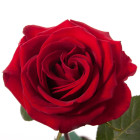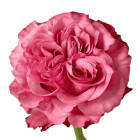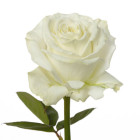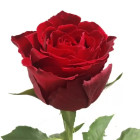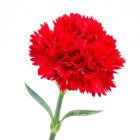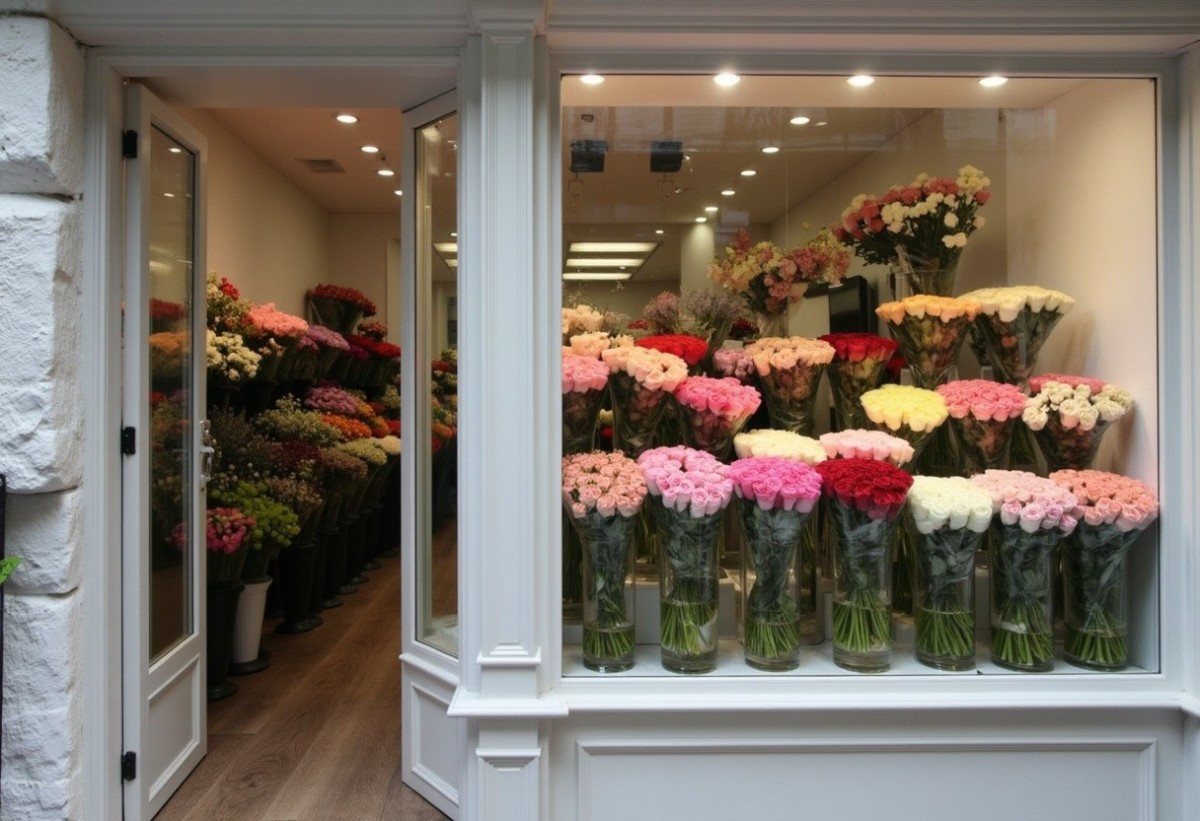
How to diversify a flower shop’s assortment without risks
The importance of assortment diversity for the floral business in Russia
In today’s market, where competition is constantly increasing and consumers are becoming more demanding, a flower shop limited to a standard range like roses and carnations risks gradually losing relevance. Buyers seek variety and uniqueness, and if they don’t find it in one place, they turn to competitors or online platforms offering a broader selection. Updating the assortment becomes not just desirable but a necessary condition to retain customer interest, encourage repeat visits, and attract new audiences. This is especially important in Russia, where the flower market is influenced by numerous factors ranging from economic sanctions to seasonal demand fluctuations.
Assortment diversity becomes a key competitive advantage. It allows a flower shop to flexibly adapt to the preferences of different market segments — from private buyers looking for the perfect gift to corporate clients needing unique solutions for event decor or partner congratulations. In circumstances where external factors, such as logistics changes or supply fluctuations, can suddenly limit the availability of certain flower types, having a wide range of alternative offerings ensures business stability.
Demand trends for flowers in Russia
Roses traditionally hold a leading position in the Russian flower market due to their versatility and enduring popularity during holidays like International Women’s Day (March 8) and Valentine’s Day. Studies show that roses account for a significant share of flower shop sales. Alongside classic red roses, demand is growing for unusual varieties:
- Peony-shaped roses. These roses feature especially lush, double blooms reminiscent of peonies and are popular for their elegant appearance and fragrance.
- French roses. Valued for their delicate scent and vintage charm.
- Gradient-colored roses. They combine several shades that smoothly transition into one another, creating a unique visual effect.
- Black and blue roses. While not naturally fully black or blue, breeders have developed varieties with very dark, almost black shades, as well as unusual grayish-blue or lavender hues.
Chrysanthemums are also gaining popularity, ranking high in sales volume. Their demand is linked to the popularity of autumn bouquets and their generally more affordable price compared to roses. Seasonal flowers, such as tulips in spring or snowdrops early in the season, attract special attention before key dates, adding freshness and relevance to the assortment. In 2025, demand growth is forecasted for French and peony-shaped roses, hydrangeas, and alstroemerias. Increased interest in irises and carnations is also noted.
Experts note that unusual weather conditions, for example, warm winters, can affect local production, although there is no direct confirmation of this yet.
The Russian market remains significantly dependent on imports from countries like the Netherlands, Ecuador, Kenya, and others. Imported flowers account for about 80% of the market. Therefore, it is important to monitor global trends and offer customers novelties that can complement the usual assortment.
Impact of diversity on sales
Shops actively adding new products to their assortment often report positive sales dynamics. Stabilized flowers, which retain a fresh look for several years, attract customers seeking long-lasting decor or gift solutions. Such products help broaden the audience, especially among corporate clients, although specific figures may vary depending on the region and marketing strategy.
Assortment diversity also helps smooth out seasonal sales declines. When demand for traditional roses drops, other flower types like chrysanthemums, seasonal offerings, decorative greens, or related accessories can support sales levels. Customers appreciate choice, and shops offering not only standard flowers but also items like vases, ribbons, and greeting cards are perceived as more attentive and professional. An interesting example concerns carnations: some florists began using their Latin name “Dianthus,” which doubled bouquet sales in 2024. This directly impacts customer loyalty and purchase frequency.
Overall, assortment diversity is a powerful tool to increase sales, attract new clients, and reduce risks associated with seasonal demand fluctuations, ultimately strengthening the flower shop’s reputation.
Main risks when expanding the assortment
Expanding a flower shop’s assortment in Russia opens new business opportunities but also entails certain risks and challenges. Financial losses, low demand for new products, and logistics difficulties can become serious obstacles to success. However, a well-thought-out strategic approach based on market analysis and minimizing potential threats makes this process more manageable and reduces the likelihood of negative outcomes. Let’s consider the main risks and effective ways to overcome them.
Financial risks and cost control
Expanding the assortment often requires additional financial investments, especially when purchasing new, possibly more expensive flower varieties or imported products. However, there are proven methods that help control the budget and avoid unjustified expenses.
Testing demand with small batches. Instead of immediately buying large volumes of new items, start with small batches to assess real customer interest. This approach minimizes potential losses if the new product does not meet expected demand. Many Russian shops successfully use this method, ordering flowers through online platforms offering flexible terms and small minimum order quantities.
Using auctions to reduce prices. Participating in flower auctions held by suppliers can be an effective way to purchase flowers at lower prices. This is especially relevant in markets with high competition for fresh flowers, where prices can be quite volatile. Online platforms like Flora Market provide access to such auctions.
For effective budget management, it is also recommended to apply the following strategies:
- Regular inventory analysis. Carefully monitor which flowers and related products remain unsold and promptly adjust purchasing plans.
- Purchasing through online platforms. These services allow selecting small batches and testing new items without significant financial risk.
- Planning seasonal purchases. Focus on buying products with the highest demand during specific periods to avoid excess stock.
- Creating a contingency budget. It is advisable to allocate a certain amount in your financial plan for unforeseen circumstances such as sudden increases in logistics costs or sharp demand drops.
- Continuous price monitoring from suppliers. Regularly compare offers from different suppliers, both international and local, to find the most favorable cooperation terms.
Implementing these measures will not only optimize expenses but also make the assortment expansion process more predictable and manageable.
Risk of low demand
One of the biggest concerns when adding new products to the assortment is the risk that they will remain unsold. To minimize this risk, it is crucial to deeply understand the needs and preferences of your target audience and flexibly adapt to market changes. The Russian flower market is dynamic, and demand for certain flower types can vary from year to year.
Using tools such as customer surveys and seasonality sales analysis is key for demand forecasting. For example, market analysis shows that certain flower types experience higher demand during specific times of the year.
For more accurate market needs assessment, it is recommended to:
- Regularly conduct surveys among your customers. Gather their feedback on the current assortment and ask which new flowers or arrangements they would like to see in your store.
- Carefully study the assortment and sales of your competitors. Pay attention to which flowers and related products are offered in other shops in your city or on popular online platforms.
- Closely monitor holiday periods and events. For example, demand for roses traditionally increases before Valentine’s Day, while in summer, wildflowers or themed arrangements may be more popular.
- Analyze sales data. Use sales figures to identify best-selling products and determine which items bring the highest profit. This helps make informed decisions about which new products to add to your assortment.
- Run trial sales. Before introducing a new product into the main assortment, conduct limited-scale test sales. This allows you to assess demand and collect customer feedback without significant financial investment.
- Offer personalized recommendations. Use customer purchase history data to suggest new products tailored to their preferences. This can increase the likelihood of interest in new arrivals.
Applying this approach will significantly reduce the risk of stocking unsold products and help focus on items your customers truly need.
Logistics risks
Logistics remains one of the most complex and critical aspects of running a flower shop in Russia, especially considering the high dependence on imported supplies and potential sanctions-related restrictions. The quality of flowers directly depends on transportation conditions, and any disruptions or violations can lead to significant financial losses.
Statistics show that a considerable percentage of flowers lose quality due to temperature control failures or delays during transportation. This is especially relevant for shipments from distant countries such as Colombia, Ecuador, and Kenya, where flowers travel long distances to Russian warehouses. Maintaining the cold chain within the 2 to 5 degrees Celsius range is a critical factor in preserving flower freshness.
To minimize logistics risks, it is necessary to:
- Carefully select reliable suppliers. Partners who guarantee strict compliance with packaging and storage standards at every stage help reduce the chance of receiving damaged products.
- Ensure uninterrupted cold chain. Collaborate with logistics companies that use specialized refrigerated trucks and regularly monitor transportation conditions.
- Strictly control delivery times. Any delays can significantly shorten flower shelf life, so prioritize routes with minimal transit time.
Implementing these measures will help maintain product quality and avoid financial losses caused by spoilage or returns from dissatisfied customers.
Practical strategies for safe assortment expansion
Expanding a flower shop’s assortment in Russia does not necessarily require significant financial investment if approached wisely in terms of resource and supplier selection. Modern online platforms such as Flora Market provide convenient access to direct supplies of flowers and decorative greens from plantations, offering a wide selection and competitive prices. Moreover, their auctions can serve as an excellent tool to save costs on procurement. However, there are other effective ways to refresh the assortment without undue risk, including cooperation with local wholesale suppliers, though their services may be somewhat more expensive. Let’s review several practical steps that will help you safely expand your shop’s offering based on real market opportunities.
Introducing seasonal and local flowers
One of the simplest and most cost-effective ways to enliven your store’s assortment is by adding seasonal flowers. Their popularity in Russia is driven by freshness, affordability, and alignment with the current time of year. Flowers like tulips in spring and chrysanthemums in autumn traditionally enjoy high demand, especially ahead of holidays. Research shows that interest in tulips increases significantly toward International Women’s Day (March 8), making them an important part of the spring assortment. Imported flowers from the Netherlands can offer greater variety and stable quality, while local options tend to be more budget-friendly though less diverse.
Popular seasonal flowers and their advantages:
- Tulips. Bright and varied in shades, symbolizing spring and renewal, ideal for bouquets on March 8 or Easter.
- Chrysanthemums. Valued for longevity and wide color range, especially in demand during autumn and winter.
- Snowdrops. Appreciated for their rarity and as a symbol of early spring.
- Peonies. Known for lush blooms and delicate fragrance, symbolizing luxury and romance, popular in late spring and early summer.
- Daffodils. Add elegance to bouquets and are popular in the spring season.
These flowers can be easily integrated into your assortment by establishing direct supply channels from local producers, helping you avoid high wholesaler markups.
Adding decorative greenery and accessories
Decorative greenery and various floristry accessories can significantly enhance the value of your bouquets without substantially increasing costs. Eucalyptus or ruscus not only decorate floral arrangements but also help prolong their freshness. Various vases, ribbons, and stylish packaging make your offer more appealing to customers. Studies show that a significant share of Russian buyers prefer bouquets that include greenery.
Examples of popular decorative greenery available on the market:
- Eucalyptus Baby Blue. Characterized by a silvery shade and good durability, perfect for creating minimalist bouquets.
- Ruscus Hypophyllum. Versatile greenery with glossy leaves, commonly used in large floral compositions.
- Phoenix Roebelinii. Adds an exotic touch and sophistication to floral arrangements.
- Eucalyptus Cinerea. Appreciated for its aroma and interesting texture, great for winter bouquets.
- Gypsophila. Gives bouquets lightness and airiness, popular for weddings and festive compositions.
Accessories such as ceramic vases or silk ribbons can be purchased in small batches, allowing you to test demand without significant financial risk.
Using combo offers and stabilized flowers
Combo offers that include several types of flowers and greenery, as well as stabilized flowers, can become an attractive addition to your assortment, helping to increase average order value and reduce risks. Ready-made sets combining multiple flower varieties and decorative greens simplify small-batch purchasing and also provide an opportunity to broaden your flower shop’s assortment.
Stabilized roses or orchids, which retain their original appearance for up to five years, may be especially appealing to corporate clients seeking long-lasting solutions for office decor or unique gifts.
Testing new varieties through partners and auctions
Adding new and unusual flower varieties to your assortment can differentiate your shop and attract new customers. Direct supplies from growers or participation in flower auctions allow you to purchase small batches of new varieties, minimizing financial risks. The process of testing new varieties may include the following steps:
- Purchasing a small batch, for example, 50 stems of a new rose variety, to assess customer interest.
- Collecting customer feedback and analyzing sales over several weeks to determine demand for the new variety.
- Utilizing exchange or return options for unsold products, if such policies are offered by the supplier.
Local wholesale suppliers can also offer services for testing new varieties; however, their prices may be 30-50% higher due to additional costs for delivery, rental, and staff.
Using seasonal and local flowers, decorative greenery, combo sets, and testing novelties via direct supplies or auctions are all effective strategies for safely updating your assortment, allowing you to control costs and attract new customers.
How to analyze the market and trends for selecting new products
Successfully choosing new products for a flower shop requires thorough market analysis and a deep understanding of current trends. Regular data collection and analysis of customer preferences, along with tracking global and local trends, will help you make informed decisions and reduce risks—especially amid economic instability, logistical challenges, and changing consumer tastes. This approach allows your shop not only to adapt to current realities but also to stay one step ahead of competitors.
Gathering data on customer preferences
To effectively update your assortment, it is crucial to understand exactly what your customers are looking for. Modern CRM systems, conducting surveys, and analyzing sales statistics provide valuable insights into current demand. For example, research shows that roses remain one of the most popular flowers for gifts in Russia, but interest is also growing in chrysanthemums, orchids, alstroemerias, and lilies.
Useful methods for collecting information about customer preferences:
- Analyzing sales history. Study which flowers and arrangements sell best during different seasons or before specific holidays.
- Conducting customer surveys. Use social media, your website, or in-store polls to learn what flowers or arrangements your customers would like to see.
- Analyzing feedback. Carefully review customer reviews about your products and service. Pay attention to which flowers and arrangements generate the most positive reactions and which receive complaints. This helps you understand what you’re doing well and what needs improvement.
- Using CRM systems. These tools help track each customer's purchase history, identify trends, and segment your audience—for example, private buyers versus corporate clients.
Applying these methods will help you avoid mistakes in assortment planning and focus on products that are genuinely in demand.
Global and local trends
Trends emerging in global and local flower markets set the general direction for assortment development. Globally, there is growing interest in minimalist bouquets and eco-friendly flowers grown with environmental care. Florists increasingly adopt sustainable practices by using biodegradable materials and supporting local producers. This trend reflects rising environmental awareness and consumers’ desire for more responsible consumption.
Locally, Russian consumers value simplicity and accessibility but are also willing to try something new and unusual. In major cities, minimalist bouquets emphasizing certain flower types—such as roses or gerberas—are becoming popular among young people. Meanwhile, classic roses and seasonal flowers remain favorites. Skillfully combining global trends with local tastes and preferences will help you strike the optimal balance between novelties and traditional offerings.
The Russian market is also characterized by:
- Increasing demand for personalized bouquets. Buyers increasingly want bouquets that reflect the recipient’s personality or fit a specific occasion. This opens opportunities for unique compositions and additional customization services.
- Influence of social media. Social networks play a significant role in shaping floral trends. Florists and shops actively use them to promote their work and inspire customers.
- Interest in exotic flowers. Russian consumers show growing interest in unusual flowers such as proteas, anthuriums, and strelitzias. These flowers add originality and sophistication to bouquets.
- Trend toward dried and stabilized plants. Arrangements made from dried and stabilized plants are gaining popularity thanks to their longevity and low maintenance.
Considering these factors, it is important to build an assortment that responds both to current customer preferences and emerging trends.
Collaborating with suppliers to select new arrivals
Suppliers often possess the most up-to-date information about new products and market trends. Working with Flora Market allows you to be among the first to learn about new varieties—including rare orchids or exotic flowers—thanks to direct listing of new items on the platform by suppliers themselves.
To stay informed about the latest trends, it is important not only to monitor platform information but also to attend specialized exhibitions and events. For example, participating in the international flower expo Flower Expo in Moscow can provide valuable insights into new varieties, cultivation technologies, and floral trends. Attending such events helps establish direct contacts with growers and suppliers, as well as gain inspiration for creating unique offerings for your shop.
Many suppliers offer the option to order small trial batches, allowing you to test new flowers and assess their demand without significant financial investment. Direct platform contacts with suppliers from Ecuador, Kenya, or the Netherlands can also give you access to exclusive offers rarely found through local wholesale intermediaries, ensuring freshness and uniqueness of your assortment.
Careful analysis of your customers’ preferences, accounting for global and local market trends, and close cooperation with reliable suppliers are key factors that will enable you to select new products for your flower shop with minimal risks and successfully adapt to the dynamically evolving Russian market.
Conclusion: steps toward safe assortment diversification
Assortment diversity today is not merely a desirable option but a necessity for flower shops aiming for success and sustainable growth. By thoroughly analyzing your customers’ preferences, closely monitoring current market trends, and building partnerships with reliable suppliers, you can minimize potential risks and significantly increase sales volumes. Including seasonal flowers, decorative greenery, attractive combo offers, and long-lasting stabilized flowers is becoming increasingly relevant. Platforms like Flora Market provide convenient tools for direct supplies, offering flexibility in assortment selection and the ability to test new items.
Don’t put off until tomorrow what can be done today: start with small steps, test new flower varieties, and carefully analyze the data you gather to make balanced and well-informed decisions. This will help your floral business remain competitive and fully meet your customers’ expectations in a rapidly evolving market. Consider registering on specialized platforms today to gain access to a wide range of flowers and modern tools for safe and effective business growth.





